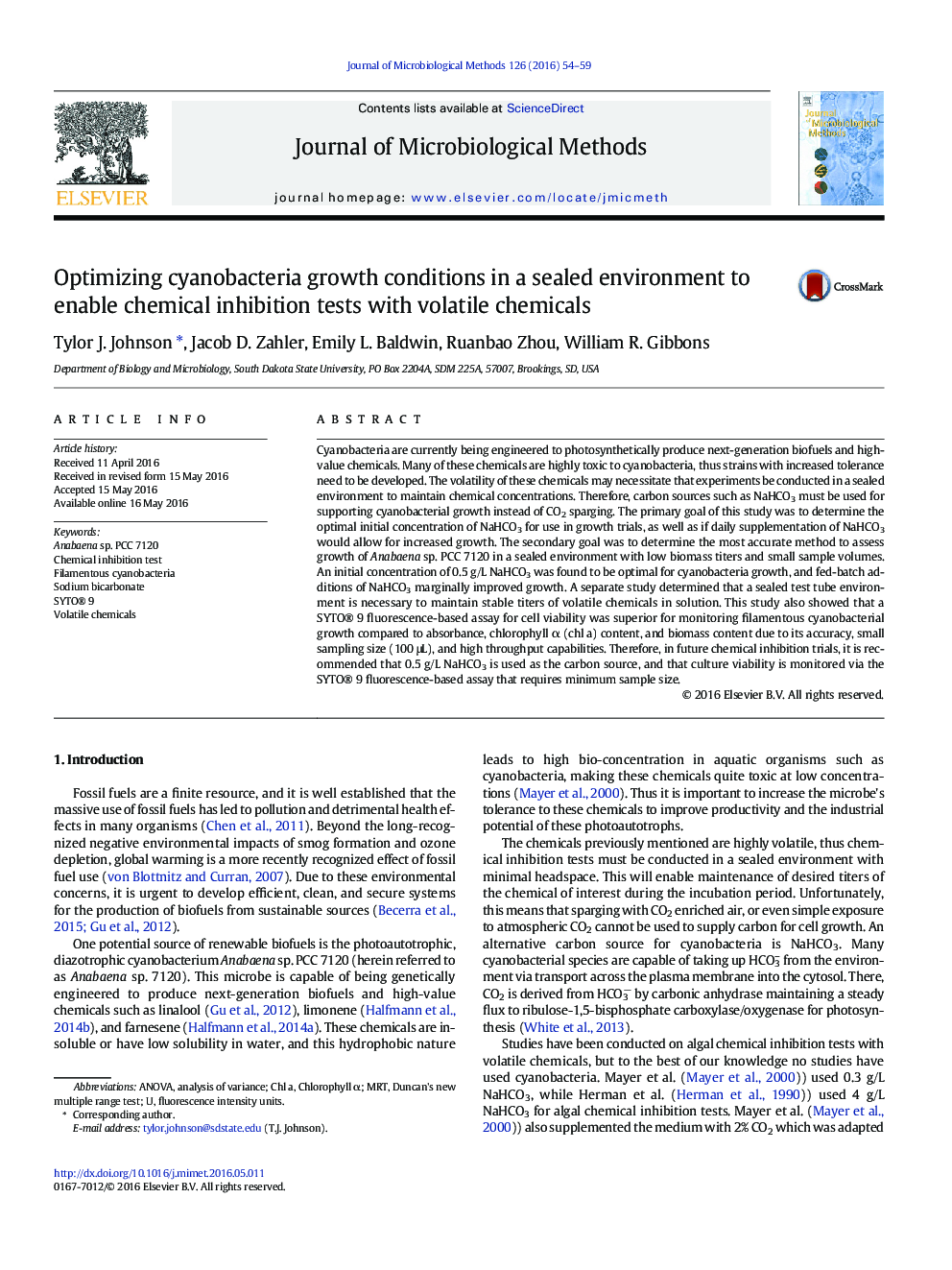| Article ID | Journal | Published Year | Pages | File Type |
|---|---|---|---|---|
| 2089701 | Journal of Microbiological Methods | 2016 | 6 Pages |
•0.5 g/L NaHCO3 is optimal for cultivating cyanobacteria in a sealed environment.•Adding NaHCO3 in a fed-batch manner marginally improves growth.•Sealed environment is necessary to maintain volatile chemicals in solution.•SYTO® 9 fluorescence assay accurately monitors cyanobacterial growth with minimal sample.
Cyanobacteria are currently being engineered to photosynthetically produce next-generation biofuels and high-value chemicals. Many of these chemicals are highly toxic to cyanobacteria, thus strains with increased tolerance need to be developed. The volatility of these chemicals may necessitate that experiments be conducted in a sealed environment to maintain chemical concentrations. Therefore, carbon sources such as NaHCO3 must be used for supporting cyanobacterial growth instead of CO2 sparging. The primary goal of this study was to determine the optimal initial concentration of NaHCO3 for use in growth trials, as well as if daily supplementation of NaHCO3 would allow for increased growth. The secondary goal was to determine the most accurate method to assess growth of Anabaena sp. PCC 7120 in a sealed environment with low biomass titers and small sample volumes. An initial concentration of 0.5 g/L NaHCO3 was found to be optimal for cyanobacteria growth, and fed-batch additions of NaHCO3 marginally improved growth. A separate study determined that a sealed test tube environment is necessary to maintain stable titers of volatile chemicals in solution. This study also showed that a SYTO® 9 fluorescence-based assay for cell viability was superior for monitoring filamentous cyanobacterial growth compared to absorbance, chlorophyll α (chl a) content, and biomass content due to its accuracy, small sampling size (100 μL), and high throughput capabilities. Therefore, in future chemical inhibition trials, it is recommended that 0.5 g/L NaHCO3 is used as the carbon source, and that culture viability is monitored via the SYTO® 9 fluorescence-based assay that requires minimum sample size.
